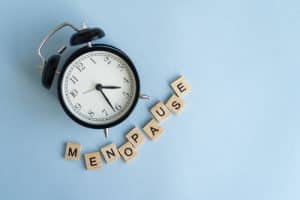Ovulation is a crucial phase in a woman’s menstrual cycle, especially for those trying to conceive. The ovulation process for most women starts from day 14 of a standard 28-day menstrual cycle, however, the exact timing varies depending on many factors, such as the cycle length. Prior to ovulation, the production of follicle stimulating hormone (FSH) increases to stimulate egg maturity and release from the ovary.
While many issues can affect the ovarian cycle, the most common are premature ovarian failure and early menopause. Though commonly mistaken for the other and used interchangeably, these are different conditions with different causes and symptoms.
Understanding Menopause and Early Menopause
In short, menopause refers to a phase when a woman loses her ability to reproduce. Natural menopause manifests in three phases. Perimenopause is the first phase and may last several years before a woman fully transitions into menopause. This phase is characterized by irregular periods and a significant reduction in estrogen production. Menopause occurs when a woman completes 12 months without having her periods. However, it helps to undergo a medical test to confirm that the missing periods are not due to abnormal birth control use or an underlying medical condition. Post menopause is the last phase and may last a decade after the full transition to menopause.
For most women, menopause begins naturally in the first stage around the age of 50, however in some cases, women lose their reproductive ability earlier than expected. Early menopause is classified when this change occurs before the age of 45, (occurring in approximately five percent of women,) and like normal menopause, it is often irreversible.
Symptoms and Diagnosis of Early Menopause

Due to premature fluctuations in hormone levels leading to the early menopause onset, a number of additional symptoms can arise that serve as a sign of early menopause. These include; vaginal dryness, bladder irritability or incontinence, hot flashes, night sweats, mood fluctuations, dry skin, eyes or mouth, fatigue and decreased sex drive.
While the symptoms may be obvious enough, to have a proper diagnosis of early menopause, it’s important to seek professional input from a doctor or OB-GYN if any symptoms arise or if you are unable to get pregnant after months of trying.
The first steps in the diagnosis process is a physical exam and blood tests to rule out other underlying conditions that may be causing the symptoms and to measure various hormone levels, specifically estradiol and FSH levels.
Causes of Early Menopause
Unfortunately, there is not one set cause or set of risk factors for early menopause. In fact, like many fertility-influencing conditions, there are many medical factors that can influence and contribute to its development.
Some studies have found that there may be a link between endometriosis and the early onset of menopause, however it is difficult to say whether one condition causes the other or if different factors cause both conditions. Additional risk factors may include lifestyle habits such as smoking, weight, or autoimmune diseases.
While these are all risk factors that may play a role, the cause is likely considered genetic, or due to chromosomal issues. While these may not be the cause in all cases, they may at least be a significant contributor in many.
A Look at Premature Ovarian Failure (POF)
Similar to early menopause, premature ovarian failure involves hormone levels and fluctuations, however POF arises when a woman’s ovaries cannot produce adequate hormone levels. This condition occurs in women below 40 and affects the production of quality fertile eggs. However, unlike early menopause, women with premature ovarian complications can still have irregular periods and even get pregnant.
Secondly, unlike menopause which is irreversible, POF is treatable when detected early, and normalizing estrogen levels can help prevent osteoporosis and other diseases that may arise from these insufficient hormone levels.
Symptoms and Diagnosis of POF

Diagnosis of POF is nearly identical to that of diagnosing for early menopause and will include a general exam and blood tests which will be evaluated for other underlying conditions that may be present and review hormone levels or FSH and Estradiol, among others.
Causes and Risk Factors of POF
To understand risk factors of POF, it’s crucial to understand some basic anatomy. Inside the ovaries are small sacs, called follicles. These follicles secrete hormones and hold eggs as they grow and mature before being released for fertilization. Typically, there is one egg per follicle, which is why you may see the terms “egg” and “follicle” used interchangeably.
On average, a female is born with about one to two million potential eggs at birth. This number significantly drops over time and a female typically has around 300,000 – 500,000 eggs at the onset of puberty. This number then continues to rapidly decline each month until the onset of menopause.
For women with primary ovarian insufficiency, the eggs, or follicles, either run out, which a doctor may identify and refer to as a depletion, or don’t work properly, commonly referred to as a dysfunction. While this seems simple enough for determining a cause, the fact is doctors are still unsure why exactly POF occurs in some women and not others.
Although medical experts have yet to understand the root causes of premature ovarian complications in women, there are some factors that have been found to raise a woman’s risk of developing POF.
Among these risk factors, researchers have found that exposure to toxins, such as radiation therapy and chemotherapy, smoking, pesticides, and chemical poisoning, can be a cause as they all have the ability to inhibit the ovarian follicles.
Like early menopause, genetic disorders can also be a culprit to POF onset in addition to chromosomal abnormalities. Autoimmune complications can also lead to ovarian tissue damage through increased antibody secretion. Additional risk factors include age, as the risk for ovarian complications increases over time, and ovarian surgery effects.
When to Seek Medical Help
Whether you are experiencing one or all the symptoms of early menopause or premature ovarian failure, it’s important to seek medical input as the impact of each may vary. Besides affecting a woman’s fertility, early menopause and premature ovarian complications can lead to a number of hormonal and health issues and can even increase the risk of depression and lower overall life quality.
It’s advisable to visit your gynecologist whenever you miss three consecutive periods to determine the nature and extent of the abnormality.
For those with early menopause, receiving a diagnosis can lead to hormonal treatments to balance symptoms and in cases of premature ovarian complications, it is possible to remedy hormonal imbalances and even improve fertility and the chance of conceiving after treatment.




